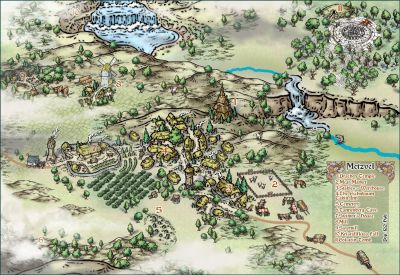
Monsen
Monsen
About
- Username
- Monsen
- Joined
- Visits
- 693
- Last Active
- Roles
- Administrator
- Points
- 8,940
- Birthday
- May 14, 1976
- Location
- Bergen, Norway
- Website
- https://atlas.monsen.cc
- Real Name
- Remy Monsen
- Rank
- Cartographer
- Badges
- 27
-
How to change 3D Starmap Up/Down Indicator Width
I am not sure how images would work. The lines for the original lines are just plain simple lines. The easiest way to deal with them is to open up the symbol catalog for editing (@Symbols\Cosmographer\basesym.FSC), the from symbol manager, clone the symbols, and finally, go in and edit the two clones, using change properties on the lines to change their width. You can then save the symbol catalog with both your new modified copies and the original in them, and you should be able to easily pick from the starmap options which of the two to use.
(I normally don't recommend overwriting the original symbol catalog, but for this case, it may be the simplest, providing you do clone the symbols and don't change the originals. But if you prefer to be safe, either save your modifications under a new name, or make a backup of the original first.)
-
How to change 3D Starmap Up/Down Indicator Width
You can customize those from :COSSTARSETTINGS:. You'll need to turn off the auto scaling to be able to enter a value manually for the base symbol scale. Note that this only applies to future items, not existing ones in the drawing.
Notice that you can also supply your own symbol catalog containing these symbols if you wish to customize them further,
-
Wall disappeared mystically
I have experienced rare cases where a line (the wall in this case) is somehow removed when using a cutting symbol on it. If you experience that windows/doors after the first don't seem to align anymore, this may be the cause. Hit :CC2REDRAW: immediately and see if the entire thing disappears.
If it does, the best way forward is to simply use undo a couple of times, back to before you placed the symbol that broke it, and then start with a window in another location first.
If it is to late to do an undo, the easiest is usually to just use a wall from the drawing tools (right click the :DD2WALL: button to get all the wall tools) and draw a new one, unless it is a really complicated shape. To make sure it follows the existing floor, either just rely on the snap points if the room was drawn with them initially, or use the :CC2MODEPT: modifier (F5) to make the wall corners line up with the floor corners.
-
Error messages
You need that version of the .NET framework. The major versions are intended to be installed side-by-side, not being replaced by the just having the "latest".
Windows should set that up for you automatically, just hit the install button in the error message (and restart CC3+ after the install is done.)
-
Repairing Walls
Node editing as Jim explains is a good option. Another good option is to use combine path to merge the walls back into one entity again. Combine path is explained in this article (you'll want to skip steps 7 and 8, as those are for turning it into a polygon, which you don't need)







